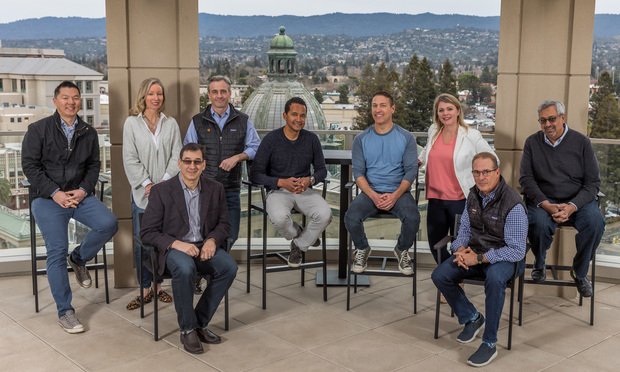This summer, BioMed Realty Trust Inc. closed on its purchase of two parcels of land comprising approximately 28 adjacent acres in San Diego. The price was approximately $47 million. Concurrently, the company also entered into a long-term ground lease for both sites with Advanced BioHealing Inc., a regenerative-medicine company and subsidiary of Shire plc that develops, manufactures and commercializes living cell-based therapies.
Advanced BioHealing intends to construct office, laboratory, warehouse and manufacturing facilities totaling in excess of 150,000 square feet on the site, which will also be able to accommodate expansion to a potential total of 800,000 feet. At the time of the deal, Kevin Rakin, Shire's president of regenerative medicine, said that the company in its expansion strategy wants to build its presence in the San Diego area.
In a separate deal, over in the La Jolla area of San Diego, Hines and its joint venture partner—a consortium of institutional investors advised by J.P. Morgan Asset Management—kicked off construction on a 13-story, 415,000-square-foot office building in the University Towne Center submarket. When the firm first started planning the project, sources involved in the deal said they had a "bullish attitude" toward San Diego and would "continue to be active in the area."
Even banks, like locally based Regents Bank, are choosing to expand there; Regents recently demonstrated that with its merger of California Community Bank. The lender has also doubled its lending limit of $5 million, and it could go higher if necessary, through its recently-cemented relationship with its parent, Grandpoint Bank.
Steven Sefton, president of Regents, tells Real Estate Forum that the bank is "bullish on the local real estate market, particularly owner-occupied conventional loans as well as SBA 504, as we see that the San Diego economy is positioned for long-term success. This is an opportune time to invest in opportune time to invest in local real estate."
So, what is it about San Diego that is making both end-user companies and investment firms continue to expand in the area?
According to Brian Mulvaney, a senior vice president in Voit Real Estate Services' local office, a major factor for the interest is the diversity of the local economy. "We have a wide variety of business sectors here, including not only defense, tourism, education and telecommunications, but also bio-tech, medical device, green energy and other active sectors."
In addition, he says, "San Diego is a finite market—its geography means that there's limited availability of land for product, creating significant barriers to entry, which is always attractive to investors and long-term values."
In the past 12 months there have been more than 50 office transactions of over 30,000 square feet, 75 industrial park sales and 96 multifamily transactions, according to Mulvaney. Retail is also posting healthy activity, with approximately 26 closings. "We believe we'll see fairly brisk activity for the remainder of 2012 as market rates stabilize, vacancies decrease and the core product types continue their progress toward stabilization and market equilibrium."
Mulvaney tells Forum that San Diego County continues to be a destination not only for local and regional developers, but also for investors from all over the world because it is "an entrepreneurial market." However, he did point out that institutional investors and REITs are somewhat less active here than in other locales in the country, due likely to San Diego's ranking as a tertiary market by many large investment groups.
But activity in the major product types is up from last year, he says, with approximately 10% more transactions occurring in the first half of 2012 compared to the first half of 2011. One of the strongest market sectors, according to Mulvaney, is multifamily, with its "brisk activity and because it's the product of choice for many lenders. That's because they're easier to finance in today's marketplace than office, retail or even industrial."
He points out that his firm is seeing a slight decrease in cap rates, "indicating that the market is beginning to tighten and values are beginning to increase once again."
According to Jolanta Campion, director of research at Cassidy Turley San Diego, since the end of the preceding recession (Q2 2009), countywide total office vacancy, including sublease space, for all classes decreased from 21.6% to 18.3% in the second quarter of this year, and combined net absorption has been positive for eight of the past 12 quarters. Total industrial vacancy has decreased from 11.2% in Q2 2009 to 10.6% three years later, and net absorption for all product types has been positive for the past four consecutive quarters. Countywide total retail vacancy has decreased from 7.1% to 6.0% during the same period, and the multifamily vacancy rate has decreased from 4.8% to 2.9%, according to Reis.
"Based on the improving leasing fundamentals across all product types, it's become apparent that investor appetite for well-located class A assets in secondary markets like San Diego is increasing, a trend that's expected to strengthen throughout the remainder of 2012," explains Campion.
"Investors have the most confidence in markets with positive employment forecasts; a leading position in growing industries such as technology, biotech and healthcare; a presence of top national universities and research centers; a highly skilled and educated workforce; and close proximity to major core markets," she says, adding that San Diego meets all of these requirements. "However, while investor interest remains high, a lack of supply and developable land remains a challenge, and competition among buyers continues to be fierce."
And the investment is happening around the entire county, not just in the popular North County pockets. In a move that suggests a bright future for the Downtown office market, BCL Inc., which recently re-entered the CBD late last year with its acquisition of 450 B Tower, revealed plans for extensive, class A-level interior renovations at the property.
Renovations at 450 B will include extending the upgraded, class-A lobby finishes to upper floor corridors and restrooms and creating a new, state-of-the-art conference facility. Work will also include updating standard tenant finishes and elevating the building operations to a class A level of service.
In addition to owning the 450 B property, the firm oversees West Beech Street Plaza, located Downtown at 444 W. Beech St. "Downtown has tremendous opportunity given the demographic and economic growth trends that are occurring," points out Casey Brown, a principal at BCL. "Furthermore, with an expanding education and technology base, both 450 B and Downtown overall provide the environment that attracts these growing industries."
According to Jones Lang LaSalle's Richard Gonor, who represented BCL in the leasing of 450 B, that deal is but a prelude to percolating investment activity in Downtown's office market. "From a capital markets perspective, Downtown is the most active area in San Diego," Gonor says.
Eli Gilbert, a senior research analyst with JLL, is also bullish on Downtown as an attractive option for tenants. "Despite sustained consolidation within the legal industry, which has negatively affected occupancy levels over the past few years, recent tenant activity points to a resurgent interest in the CBD," he says.
While Gilbert sees Downtown as a traditionally "lateral-move submarket," he is seeing a jump in tenant migration here from neighboring submarkets. The activity, whether it be leasing or investments, says it all, and what it says speaks well for the future of San Diego.
© Touchpoint Markets, All Rights Reserved. Request academic re-use from www.copyright.com. All other uses, submit a request to [email protected]. For more inforrmation visit Asset & Logo Licensing.







